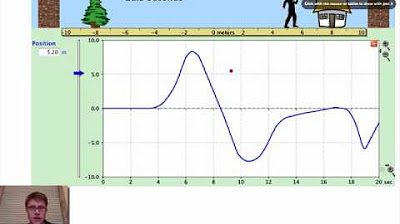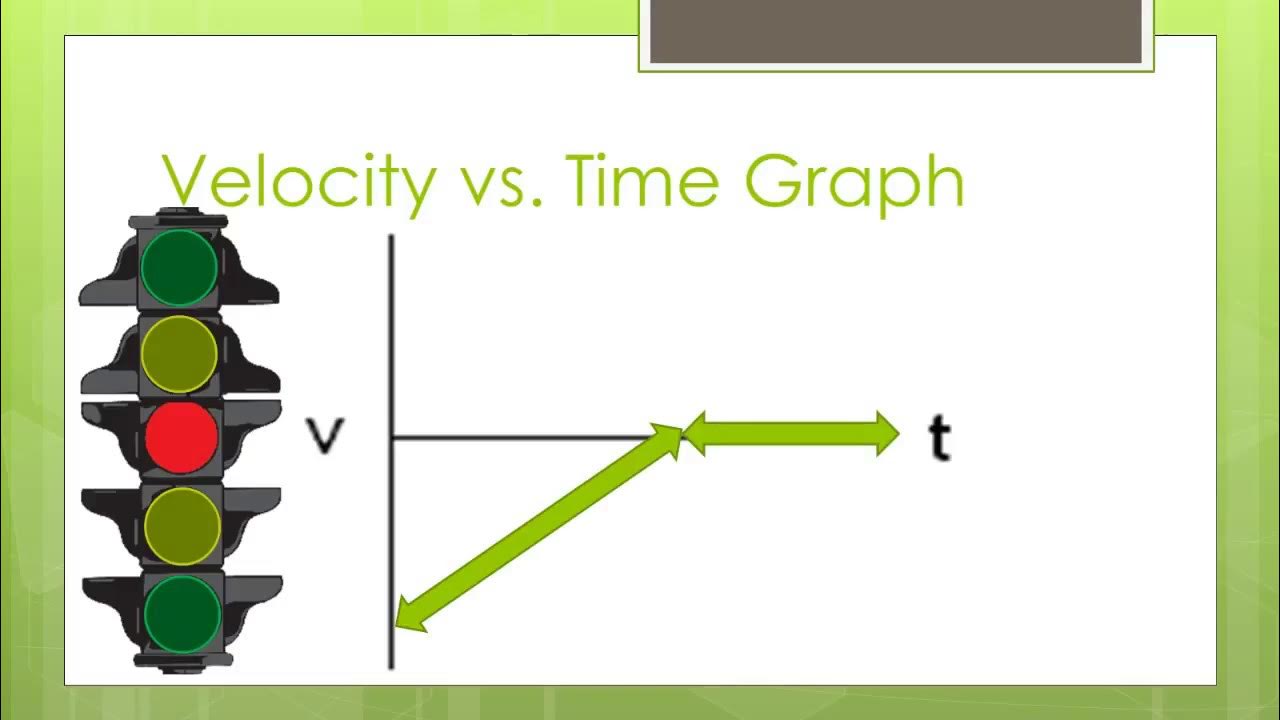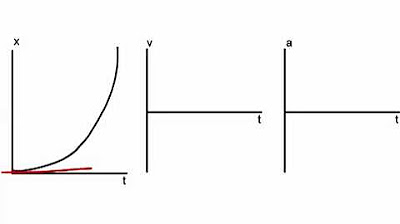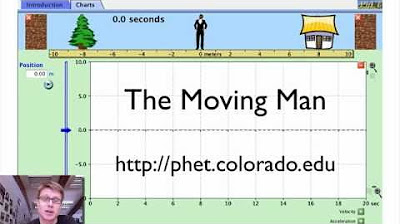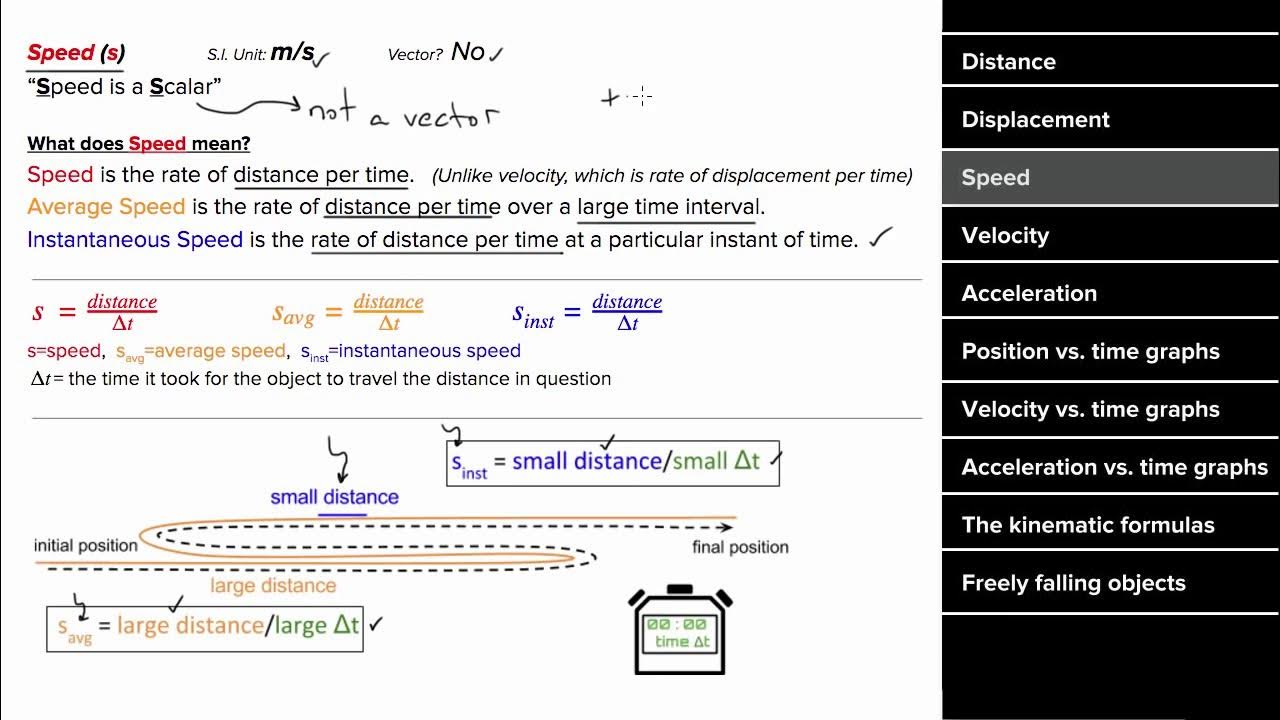Position, Velocity and Acceleration
TLDRIn this informative video, Mr. Andersen explores the concepts of position, velocity, and acceleration in physics. He explains how changes in position over time result in velocity and further analysis can reveal acceleration. Using real-world examples like skydiving and a moving car, he illustrates how to interpret position vs. time graphs to determine if an object is accelerating and how to calculate its velocity and acceleration. The video concludes with a practical demonstration of measuring a basketball's acceleration using a smartphone, emphasizing the relationship between net force and acceleration.
Takeaways
- 📏 Position, velocity, and acceleration are fundamental concepts in physics that describe an object's motion.
- 💺 Skydiving is used as an analogy to explain how position changes with time and velocity increases due to acceleration.
- 🎯 Terminal velocity is the constant speed reached when air resistance equals the force of gravity, over 100 mph in skydiving.
- 📉 Position vs. time graphs can be used to analyze an object's motion; a flat line indicates no movement, while a sloping line indicates constant velocity.
- 🚗 A car moving with constant velocity will have a straight line graph with a positive slope on a position vs. time graph.
- 🏃 An accelerating object will have a curved position vs. time graph with a slope that increases from left to right.
- 📐 The slope of a position vs. time graph represents velocity, and the change in velocity over time represents acceleration.
- 🏀 A basketball falling under gravity will have a negative acceleration (due to gravity) and can be measured using a velocity vs. time graph.
- 🔢 The acceleration can be calculated by the slope of the velocity vs. time graph, which in the case of a falling basketball is close to the acceleration due to gravity (9.8 m/s²).
- 🔄 Understanding these concepts allows one to make predictions about an object's motion and analyze data to determine velocity and acceleration.
- 🧪 In a physics lab, tools like ticker tape or motion sensors can be used to measure and analyze an object's motion.
Q & A
What are the three fundamental concepts discussed in the video?
-The three fundamental concepts discussed in the video are position, velocity, and acceleration.
How does one measure position?
-Position is measured by observing the change in an object's location over time, specifically by marking the center of mass at different points and noting the displacement.
What is the relationship between displacement and velocity?
-Displacement divided by time gives us velocity. Velocity is a vector quantity that indicates both the direction and the rate of change of position.
How can you determine if an object is accelerating?
-An object is accelerating if its velocity is changing over time. This can be observed by a non-zero slope in the position versus time graph or a non-constant velocity along the velocity versus time graph.
What is the significance of terminal velocity?
-Terminal velocity is the constant speed an object reaches when the force of gravity pulling it down equals the force of air resistance pushing it up. At this point, there is no net force acting on the object, and thus no acceleration.
How does the video demonstrate the absence of a net force?
-The video demonstrates the absence of a net force by showing an object with no change in velocity over time, resulting in a flat, horizontal line in the position versus time graph.
What is the difference between an object moving with constant velocity and one that is accelerating?
-An object moving with constant velocity will have a straight line with a positive slope in its position versus time graph, indicating a uniform motion. An object that is accelerating will have a curve in its position versus time graph, with the slope increasing over time, indicating an increase in velocity.
How can you calculate the acceleration of an object?
-Acceleration can be calculated by dividing the change in velocity by the time over which the change occurs. It is represented by the slope of the velocity versus time graph.
What is the acceleration due to gravity, and how does it compare to the acceleration measured for the basketball?
-The acceleration due to gravity is approximately negative 9.8 meters per second squared. The basketball's acceleration measured in the video is around negative 10 meters per second squared, which is close to the acceleration due to gravity, considering the crude software used for measurement.
What are some real-world examples used in the video to illustrate these concepts?
-The video uses the examples of a skydiver experiencing terminal velocity, a car moving with constant velocity, and a basketball falling under the influence of gravity to illustrate the concepts of position, velocity, and acceleration.
What tools can be used in a physics lab to analyze motion?
-In a physics lab, tools such as ticker tape timers or motion sensors can be used to analyze an object's motion and determine its position, velocity, and acceleration.
Outlines
📐 Introduction to Position, Velocity, and Acceleration
This paragraph introduces the concepts of position, velocity, and acceleration in the context of physics. Mr. Andersen explains how to measure position and determine velocity and acceleration, using the example of skydiving to illustrate changes in position over time. The discussion includes the concept of terminal velocity, where the force of gravity is balanced by air resistance, and the importance of considering frame of reference when analyzing motion. The paragraph also touches on the relationship between displacement, velocity, and acceleration, and how these quantities can be represented graphically.
🏃♂️ Analyzing Constant Velocity and Acceleration
In this paragraph, Mr. Andersen delves into the analysis of constant velocity and acceleration through examples. He discusses the graphical representation of an object with constant velocity, which results in a straight line with a positive slope on a position versus time graph. The paragraph then contrasts this with an object undergoing acceleration, which is depicted as a curve with an increasing slope. Mr. Andersen uses the example of a car moving at a constant velocity and a basketball falling under gravity to demonstrate how to calculate velocity and acceleration from graphical data. The importance of understanding net force and its direction in relation to acceleration is also highlighted.
Mindmap
Keywords
💡Position
💡Velocity
💡Acceleration
💡Terminal Velocity
💡Force
💡Displacement
💡Frame of Reference
💡Graphs
💡Significant Digits
💡Video Analysis
💡Net Force
Highlights
Introduction to the concepts of position, velocity, and acceleration in physics.
Explanation of how to measure position, determine velocity, and calculate acceleration.
Anecdote about experiencing acceleration through skydiving and reaching terminal velocity.
Discussion on the relationship between position change over time and velocity.
Illustration of how velocity is a vector and its calculation through displacement over time.
Explanation of acceleration as the change in velocity over time.
Correlation between acceleration and the presence of a net force on an object.
Use of a position versus time graph to determine if acceleration is occurring.
Description of a position versus time graph for an object with constant velocity.
Demonstration of how to calculate velocity from a position-time graph.
Explanation of the concept of an object with constant velocity moving with no net force acting on it.
Presentation of a real-world example of measuring the velocity of a moving car using video analysis.
Explanation of how to determine the acceleration of an object from its velocity-time graph.
Example of calculating the acceleration of a falling basketball and comparing it to the acceleration due to gravity.
Discussion on the presence of net force on an object in free fall despite other forces like air resistance.
Encouragement for viewers to apply the concepts learned to analyze data and make predictions about an object's motion.
Mention of alternative methods for measuring position, velocity, and acceleration in a physics lab.
Conclusion that emphasizes the practical application and understanding of the concepts discussed.
Transcripts
5.0 / 5 (0 votes)
Thanks for rating:
